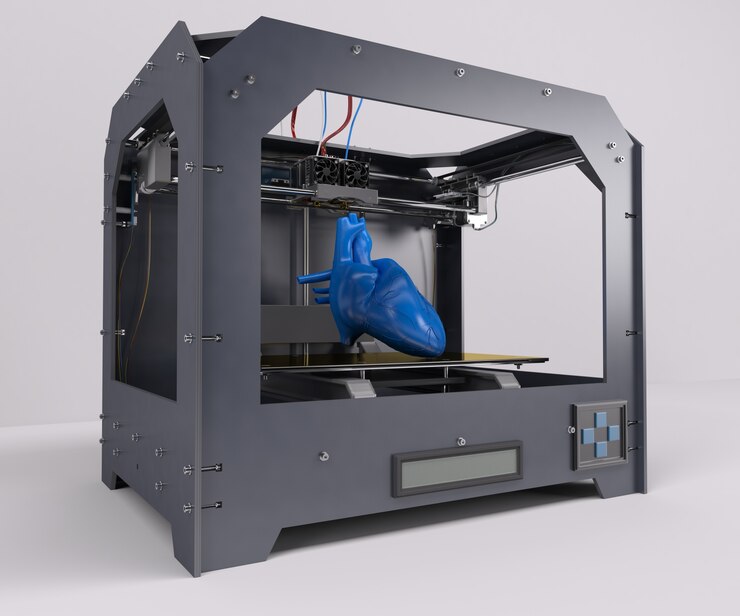
Global 3D Bioprinting Market Overview
The global 3D bioprinting market is poised for strong growth, with projections indicating a compound annual growth rate of 12–15% over the next five years. This surge is being driven by several converging factors, including the rising demand for organ transplants, increasing focus on tissue regeneration, expanding applications in the pharmaceutical and cosmetic sectors, and continuous advancements in bioprinting technologies.
Download pdf Brochure: https://meditechinsights.com/3d-bioprinting-market/request-sample/
Significant investments in research and development and the growing use of bioprinted tissues in drug development and testing further accelerate market momentum. Public–private partnerships are expanding as governments, research institutions, and private companies collaborate to advance clinical solutions, scale bioprinting platforms, and pave the way for future breakthroughs in regenerative medicine and personalized therapies.
Report Overview
3D bioprinting represents a cutting-edge technological approach that builds tissue-like structures through the layered deposition of biocompatible materials. The process uses bioinks formulated from living cells and supportive biomaterials to create constructs that mirror the architecture and function of human tissues. Utilizing specialized printers, bioprinting can reproduce highly detailed biological forms such as skin, cartilage, bone, and organ-like models that simulate real human physiology.
This advanced method has revolutionized regenerative medicine by enabling the development of patient-specific tissues designed to repair or replace damaged biological structures. In drug discovery, bioprinted tissues serve as more accurate testing platforms, allowing pharmaceutical companies to assess drug safety, toxicity, and efficacy with greater precision, while reducing dependence on animal models. Disease modeling also benefits greatly from 3D bioprinting, as researchers are able to replicate disease environments and study progression at the cellular level. The continued evolution of bioprinting technology brings the medical field closer to future possibilities such as full organ fabrication, personalized implants, and advanced therapeutic interventions tailored to individual patients.
Growing Adoption in Pharmaceutical and Cosmetic Industries to Propel Market Demand
The pharmaceutical and cosmetic sectors are rapidly integrating 3D bioprinting into their research frameworks, contributing significantly to market expansion.
Pharmaceutical companies utilize bioprinted tissues to conduct high-fidelity drug tests that yield more dependable predictions of human responses. These tissues replicate the microenvironment of real human organs, improving the accuracy of early-stage trials and helping companies reduce drug development timelines and costs. As regulatory bodies increasingly emphasize human-relevant testing, bioprinting offers a critical advantage in meeting compliance and minimizing clinical trial risks.
Cosmetics companies now rely heavily on bioprinted skin models to test formulations safely and ethically. With global consumers advocating strongly for cruelty-free testing, bioprinting provides an ideal alternative to animal testing. Bioprinted skin behaves similarly to natural skin, enabling companies to evaluate reactions, sensitivity, and absorption properties with improved accuracy. This shift supports regulatory trends and enhances brand reputation, encouraging broader adoption of bioprinting within the beauty and personal care industries.
Overall, the alignment of ethical testing practices, improved testing accuracy, and regulatory compliance is propelling the integration of bioprinting across both industries, reinforcing long-term market growth.
Advancements in Bioprinting Technology Driving Market Growth
Technological progress remains a central force behind the rapid expansion of the 3D bioprinting market.
Enhanced bioink formulations have improved the mechanical stability, printability, and biocompatibility of printed tissues, allowing for the replication of increasingly complex structures.
Next-generation bioprinters offer superior precision, enabling the accurate placement of cells in intricate patterns that support realistic tissue formation, including the creation of vascularized networks essential for tissue survival.
Innovations in printing speeds and multi-material deposition technologies have broadened the scope of what can be printed, from multilayered skin constructs to organoids and hybrid tissue models.
Advances in imaging technologies, software modeling, and automation have also contributed to the improved efficiency and scalability of bioprinting systems. These developments attract increased investment from healthcare providers, biotechnology firms, and research institutions seeking to translate bioprinted solutions into clinical applications.
As technologies mature, the vision of creating fully functional human organs becomes increasingly attainable, driving sustained innovation and commercial interest.
Competitive Landscape Analysis
The global 3D bioprinting market consists of a diverse mix of established companies and emerging innovators developing cutting-edge bioprinting solutions and materials. Organizations in this space employ strategies such as product innovation, research collaborations, strategic partnerships, and regional expansion to strengthen their market positions.
Key players include:
• 3D Systems, Inc.
• Merck KGaA
• Organovo Holdings Inc.
• CollPlant Biotechnologies Ltd.
• Envisiontec US LLC
• Poietis
• Aspect Biosystems Ltd.
• Advanced Solutions Life Sciences, LLC
• Brinter
• Inventia Life Science Pty Ltd
Market Drivers
• Rising demand for organ transplants and tissue regeneration
• Growing adoption across pharmaceutical and cosmetic industries
• Advancements in bioprinting technology
• Significant investments in research and development
Attractive Opportunities
• Increased demand for personalized medicine
• Advances in bioinks and next-generation biomaterials
• Growing interest in regenerative medicine and stem cell-based therapies
Market Segmentation
According to the report by Medi-Tech Insights, the global 3D bioprinting market is segmented across multiple dimensions, providing a comprehensive view of growth opportunities and market behavior from 2022 to 2029. The report includes regional and country-level market size assessments, capturing trends across North America, Europe, Asia-Pacific, Latin America, and the Middle East.
Segmentation is further categorized by product type, including bioprinters and bioinks; by application, encompassing drug testing, regenerative medicine, tissue engineering, and research modeling; and by end users such as pharmaceutical companies, research laboratories, academic institutes, and biotechnology firms. This structured segmentation helps identify emerging opportunities and informs strategic decision-making for stakeholders across the ecosystem.
Key Request a free sample copy or view report summary: https://meditechinsights.com/3d-bioprinting-market/request-sample/
About Medi-Tech Insights
Medi-Tech Insights is a healthcare-focused business research & insights firm. Our clients include Fortune 500 companies, blue-chip investors & hyper-growth start-ups. We have completed 100+ projects in Digital Health, Healthcare IT, Medical Technology, Medical Devices & Pharma Services in the areas of market assessments, due diligence, competitive intelligence, market sizing and forecasting, pricing analysis & go-to-market strategy. Our methodology includes rigorous secondary research combined with deep-dive interviews with industry-leading CXO, VPs, and key demand/supply side decision-makers.
